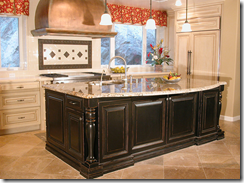
Appliances
Spending extra money to buy an energy star rated appliance will also save you a bundle. Despite the initial blow, an appliance built with energy ratings in mind will certainly save you 10 – 20 dollars a month over the course of however long you own your home. This could mean anywhere from 5 – 60 years, and that’s a lot of money when you add it up!
Most energy-star rated refrigerators have an energy saver option which will cut the amount of time spent cooling during the day in half. Yet, it gets a bit trickier when it comes to selecting the right stove. For those who like more control over temperature usually select gas over electric, yet there are newer, induction cook tops that will generate heat faster while allowing more control. This translates to less cook time and more money saved each month.
Whether it’s a stove, fridge or dishwasher, all that are categorized as “energy efficient” use low voltage motors and usually run quieter than traditional appliances.

Space
Quite commonly, the installation of energy efficient appliances mixed with the ease of reach and layout is typically referred to as the ‘triangle.” This means that you should be able to reach most of your major appliances without having to move more than a few steps. Yet, the stove should not be facing the fridge because of heat remittance, and the stove should always be somewhat close to the sink for food preparation. Lastly, there should be sufficient counter space directly behind, or near the fridge so that items can be placed from the freezer to the counter top.

Waste
Aside from composting and making sure to recycle, there’s one particular method that most people nowadays use to rid of excess food waste, while not harming the environment. Garbage disposals are a great way of recycling waste and further supplying water treatment plants with what are known as biosolids – These can thus be used to generate renewable power for the plant.

Floors, Cabinets and Walls
Even if your home isn’t completely built with reclaimed wood, your kitchen can be. Hardwood floors and cabinets made from reclaimed wood or recycled wood products are becoming increasingly popular. It’s also true that you can purchase recycled tile for your kitchen floors and/or walls.
If you’re using a stain or finish on your wood, remember to buy non-volatile formulas.
If followed thoroughly, the above recommendations can make for one fantastically sustainable kitchen. The next step would be to decorate it with plenty of green décor and incorporate green cookware into your every day lifestyle!





